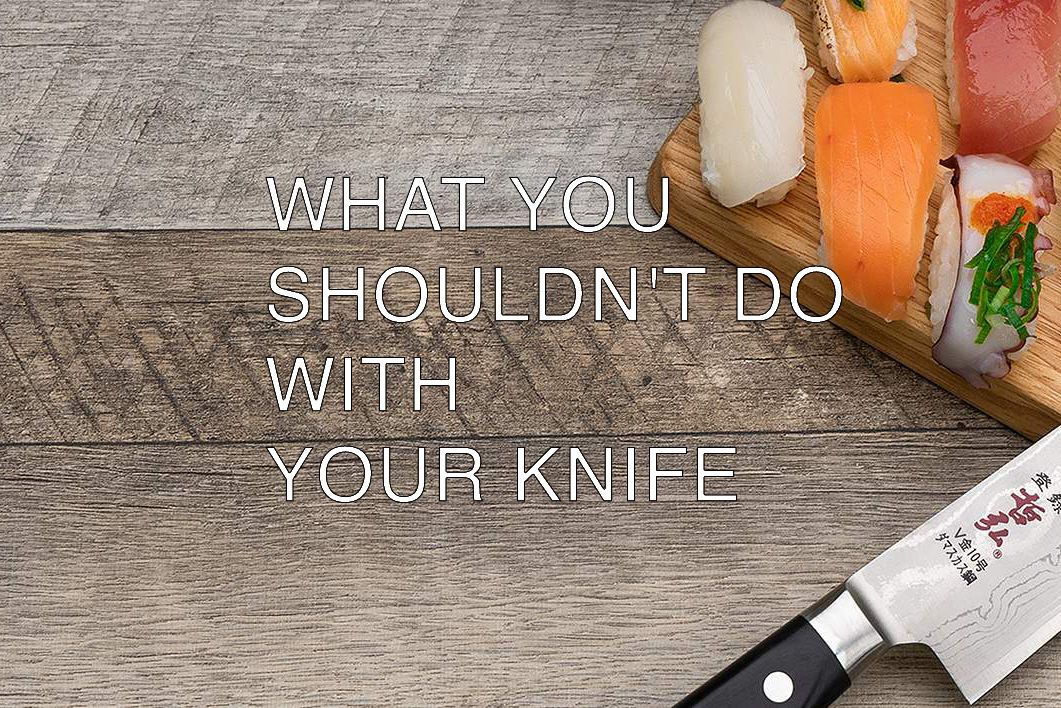Kitchen knives are now found in nearly every home; they have firmly established themselves in our daily lives and are widely regarded as universal things. When it comes to handling knives, there are certain rules and principles that must be followed at all times. To stay out of trouble, let's figure out what you can and can't do with a knife.
Safety aspects
Our forefathers created the knife for protection and hunting purposes. Kitchen knives, while less dangerous than combat knives, have a sharpened blade and must be used in accordance with a few safety rules:
- the blade should be directed away from the cook when working;
- cutting and cleaning small objects towards you can only be done with special knives with a small blade;
- do not use blunt knives (you must use effort, and the course of the blade is unpredictable if it slides off);
- do not try to catch a falling knife - you risk gripping a sharp blade and squeezing it impulsively;
- do not put the knife on the table's edge (it may fall on your leg if you move it carelessly);
- do not leave it on the table or in a drawer amid the silverware and food (risk of cutting yourself if you try to take another object with the blade up);
- do not lay on the table with the blade up;
- do not support the object being cut with your thumb.
Taking care of the knife
Certain rules of care, use, and storage must be observed for the blade to remain sharp as long as possible and serve without loss of cut quality for many years. Here's what you can't do with a knife from this point of view:
- Use for other purposes. Each knife has its specific application, which must be strictly followed. For example, you cannot cut too hard products with a ceramic knife, this will lead to cracks and chips on the cutting edge. The steel knife is not designed to open lids or chop bones - this will damage the product.
- Leave dirty/wet. The culture of knife handling implies timely cleaning and hand washing of the blade. The blade must also be wiped dry to prevent corrosion. If moisture has entered the folding knife mechanism, it is recommended to dry the product with a hairdryer.
- Store in a pile of other devices. The cutting edge is sensitive to mechanical damage, therefore, when stored in bulk in a box with other devices, it can deteriorate and become dull. Store knives in special stands, wall holders, or in a separate tray.
- Keep in a leather sheath for a long time. Especially if the knives are made of carbon steel and with handles made of natural materials. When processed, the leather is impregnated with various chemical compounds that increase the practical characteristics of the material. However, with prolonged contact with the blade, these components can cause staining and corrosion on the metal. For long-term storage, the blade should be wrapped in oiled paper or canvas.
- Store in a high humidity environment. Even stainless steel can be susceptible to rust if stored in high humidity conditions. For this reason, you should not keep knives near a sink, stove, in the pool or sauna room, or the bathroom.
- Sharpen against each other. Thus, craftsmen can edit knives made of mild steel - stainless steel, for example. However, this method requires skill and is not suitable for dressing hard high carbon steel blades. Moreover, in this case, the cutting edge will deteriorate. For dressing and sharpening knives, you should use a special tool - water stones, for example.



POST COMMENTS
0 COMMENT(S)